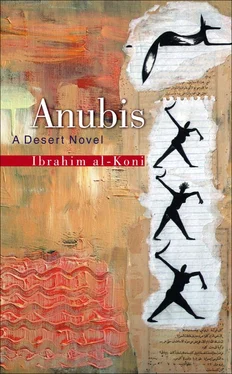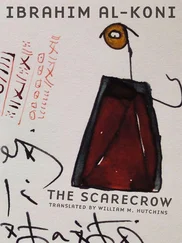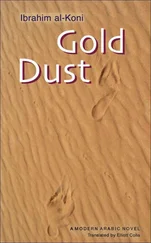He said to Adam: “Since you have hearkened to the words of your wife and eaten from the tree I warned you to shun, saying, ‘Don’t eat from it,’ you have brought down a curse upon the earth. You will need to toil every day of your life to wrest a living from it, and it will reward your efforts with thorns and briars. You will eat the grass of the field. By the sweat of your brow will you have bread to eat, until you return to the earth from which you sprang, because you are dirt and to the dirt you return.”
Genesis 3: 17–19

I AWOKE AT SUNRISE and found myself alone, abandoned, and stretched out in a harsh, solitary area into which intruded stubborn spines of sand. It was blocked to the west and north by a desert punctuated by grim mountain cliffs, around the sides of which the sands twisted in relentless swirls. A discrete, early light kissed their peaks, but the tips of the sand drifts were bathed with morning’s flood, and glinting gold specks flashed there.
I awoke but lay quiet for a long time, listening to a stillness that I was prepared to believe — I don’t know why — eternal, devoid of any precursor, the sole beloved ever to share the desert’s solitude, since it came into existence.
Surveying my surroundings, I found no food or water in sight. When I tried to stand, my body felt as heavy as if I had covered incredible distances on foot. On touching my face, I discovered that it was enveloped by a soft mask of skin that resembled a piece of silk. I ran my palm over my chest only to find it clad in soft, rich hide stamped with symbols I did not recognize. My feet were also encased in splendid shoes of costly leather decorated with talismanic charms. I did not feel hungry or thirsty.
Overcoming the heaviness of my body, I regained my feet, got my bearings, and headed east. The golden disk was concealed behind a high ridge of sand. The sandy tentacles with overbearing tops twisted one way and the other, but the valleys between them were grim and uninviting. All the same, I caught sight of a green tangle of plants clinging to the earth, which was strewn with pebbles in places and sand granules in others.
A vast mountain of sand blocked my way. At its foot, I discovered a line of luxuriant plants, massed together. These took the form of mounds, crowned with delicate, pure white florets that responded to the morning breezes by bobbing back and forth in a desperate dance, as if wishing to break free from their roots. They sighed mournfully, affording me companionship in the lonely desolation of the timeless quiet. From the canopy of one I seized a handful of flowers that oozed a white liquid. I sampled a piece of the stalk, testing its flavor with my tongue. The sap was gooey and had a bitter taste.
When I tried to scale the sandy mountain, I discovered its sand was the unstable kind that shifts and rushes downward in a flood, sweeping everything with it. I struggled for a long time and attempted to anchor my hands in the sand, but was always cast back, down to the foot of the mountain. Resolving to outwit it, I relinquished my attempts to climb straight up and edged along sideways, instead, following the protruding veins that lay along its horizontal articulations. These led me to the summit from which I beheld broad plains interspersed with green clusters of trees at four points. Meanwhile, on four sides, sandy ridges also enclosed the plains, which seemed set apart from the desert’s body, which extended and multiplied until it disappeared at what passed for the horizon. To the far southwest, at the point where the intersection of the southern mountain ranges with the western ones should have been visible, there was a cleft, which seemed the sole escape from this mighty fortress contrived by the desert’s cunning.
I tumbled down the prodigious slope, casting myself on the unstable, rough terrain, which rolled me down, over and over. On reaching the mountain’s foot, I shot off toward the groves but did not reach them, since they were farther than I had anticipated. On the way, I found evidence that creatures inhabited the land. The traces were plentiful, but my eyes discerned not a single animal. When I reached the first clump of green, I found trees there and some shrubs. These all followed the course of a bold stream that gleamed in the sunlight. Water gushed from a natural reservoir to pour into the plain in little rivulets that ran west and east, until the neighboring sandy hills consumed them.
Copious clusters of attractive fruit, which looked delicious, hung from the tops of the trees. I stretched out my hand and plucked a plump fruit the size of my finger from a generous bunch. When I touched it, I found the clear liquid leaking from it was sticky. I popped it into my mouth and started to chew. As it dissolved beneath my tongue, it was so sweet my teeth hurt. It mixed with my saliva and began to course through my body. Chewing on it lazily, I reveled in the unusual taste. I was in no hurry to swallow the morsel, not because I did not feel hungry but because of the obscure sensation the taste awakened in my heart.
I visited the other three springs as well. Around them grew date palms in congenial groupings similar to that surrounding the first spring. From these palms dangled stalks heavy with various types of dates. Beneath the trunks of these lofty palms were scattered dates, some dry and others still fresh. On the damp earth beside the springs were tracks of the animals whose traces I had found by the rivulets rich with vegetation. I could identify them, now that I had jogged my memory, as tracks left by the feet of gazelles, Barbary sheep, hares, lizards, and various types of birds. I did not recognize them merely from their tracks but from the dung pellets distributed everywhere. Flocks of birds flapped their wings as I violated the groves’ sanctuary. They would soar over my head once or twice before flying off, only to land on the canopy of the nearest spring. I encountered a large herd of gazelles in a valley opposite the last spring toward the southeast. Acacia trees proliferated there, and the gazelles roamed among the trees, some grazing off plants on the ground and others craning their necks to reach the top of the acacias and pluck the green leaves. They became skittish when they saw me and joined ranks to form a single herd. This reminded me of the way goats react to the scent of jackals. They watched me with collective curiosity but did not take fright or flee. So I felt certain they had never seen a man before. I stood, admiring the beauty of their eyes, but eventually the herd bolted and dashed away.
I traversed an open area coated with gravel composed of small round, red pebbles until I reached the base of the mountain range. What I had assumed was a sandy slope was actually a genuine mountain scaled by drifting sand. The walls forming this mythic fortress had not originally been ridges of sand but rocky mountains that the sands had seized in crazed raids, submerging the rock. Only the southern barrier had succeeded in resisting their assault, even though the wind had been able to submerge it from the back, as I discovered later.
All along the cliff face there were caves, which seemed, seen from below, to be fabulous mouths. Around their entrances lay many dung pellets, but I did not know a herd of Barbary sheep sheltered there until a huge ram with thick, matted fleece stormed out of a cave and scaled the high rocks in a couple of bounds. He stood looking down on me curiously. When I explored the cave, I discovered that its walls were decorated with numerous colossal figures. These were strangely contrived creatures: legendary animals and women. Men pursued Barbary sheep, or — brandishing spears — danced in groups. There were other creatures concocted by matching men’s bodies with animal heads crowned with horns or with birds’ heads. I stood for a long time examining these unnatural, composite creatures.
Читать дальше













